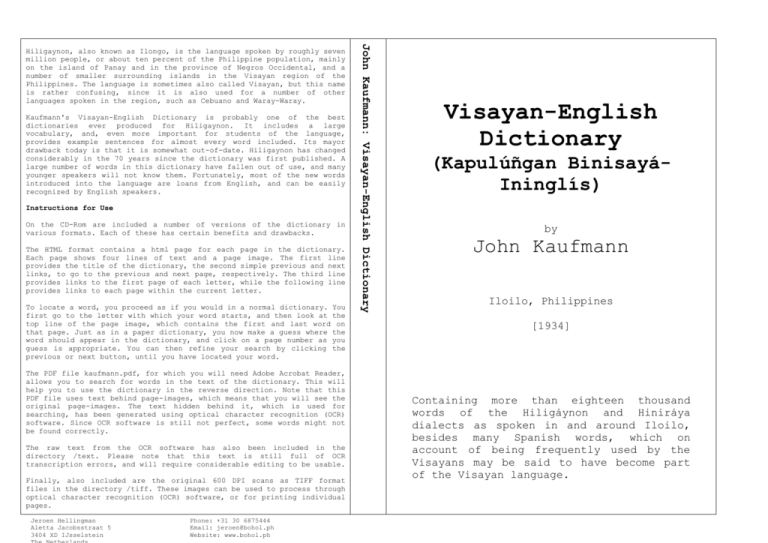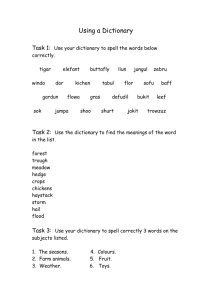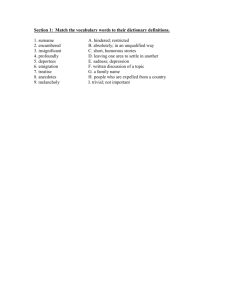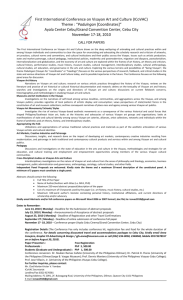Hiligaynon, also known as Ilongo, is the language spoken by
advertisement

Kaufmann's Visayan-English Dictionary is probably one of the best dictionaries ever produced for Hiligaynon. It includes a large vocabulary, and, even more important for students of the language, provides example sentences for almost every word included. Its mayor drawback today is that it is somewhat out-of-date. Hiligaynon has changed considerably in the 70 years since the dictionary was first published. A large number of words in this dictionary have fallen out of use, and many younger speakers will not know them. Fortunately, most of the new words introduced into the language are loans from English, and can be easily recognized by English speakers. Instructions for Use On the CD-Rom are included a number of versions of the dictionary in various formats. Each of these has certain benefits and drawbacks. The HTML format contains a html page for each page in the dictionary. Each page shows four lines of text and a page image. The first line provides the title of the dictionary, the second simple previous and next links, to go to the previous and next page, respectively. The third line provides links to the first page of each letter, while the following line provides links to each page within the current letter. To locate a word, you proceed as if you would in a normal dictionary. You first go to the letter with which your word starts, and then look at the top line of the page image, which contains the first and last word on that page. Just as in a paper dictionary, you now make a guess where the word should appear in the dictionary, and click on a page number as you guess is appropriate. You can then refine your search by clicking the previous or next button, until you have located your word. The PDF file kaufmann.pdf, for which you will need Adobe Acrobat Reader, allows you to search for words in the text of the dictionary. This will help you to use the dictionary in the reverse direction. Note that this PDF file uses text behind page-images, which means that you will see the original page-images. The text hidden behind it, which is used for searching, has been generated using optical character recognition (OCR) software. Since OCR software is still not perfect, some words might not be found correctly. The raw text from the OCR software has also been included in the directory /text. Please note that this text is still full of OCR transcription errors, and will require considerable editing to be usable. Finally, also included are the original 600 DPI scans as TIFF format files in the directory /tiff. These images can be used to process through optical character recognition (OCR) software, or for printing individual pages. Jeroen Hellingman Aletta Jacobsstraat 5 3404 XD IJsselstein Phone: +31 30 6875444 Email: jeroen@bohol.ph Website: www.bohol.ph John Kaufmann: Visayan-English Dictionary Hiligaynon, also known as Ilongo, is the language spoken by roughly seven million people, or about ten percent of the Philippine population, mainly on the island of Panay and in the province of Negros Occidental, and a number of smaller surrounding islands in the Visayan region of the Philippines. The language is sometimes also called Visayan, but this name is rather confusing, since it is also used for a number of other languages spoken in the region, such as Cebuano and Waray-Waray. Visayan-English Dictionary (Kapulúñgan BinisayáIninglís) by John Kaufmann Iloilo, Philippines [1934] Containing more than eighteen thousand words of the Hiligáynon and Hiniráya dialects as spoken in and around Iloilo, besides many Spanish words, which on account of being frequently used by the Visayans may be said to have become part of the Visayan language.








